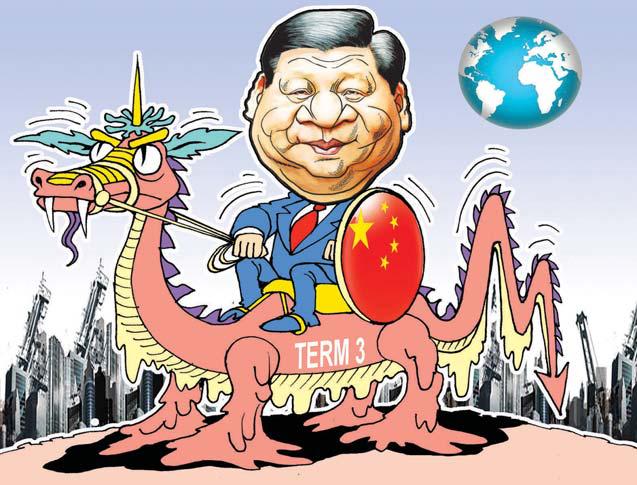China: Forever No.

As he embarks on a third term, Xi Jinping’s goal is to make China a midlevel developed country in the next decade, which implies a growth rate of around 5%. But underlying trends – bad demographics, heavy debt and declining productivity growth – suggest the country’s overall growth potential is about half that rate.
The implications of China growing at 2.5% have yet to be fully digested anywhere, including Beijing. For one thing, assuming that the US grows at 1.5%, with similar rates of inflation and a stable exchange rate, China would not overtake America as the world’s largest economy until 2060, if ever.
Shrinking population and declining productivity growth: Growth in the long term depends on more workers using more capital, and using it more efficiently (productivity). China has been growing by injecting more capital into the economy at an unsustainable rate. In recent years, much of that capital fuelled a property bubble, which is now bursting, with stark implications for China’s economic superpower ambitions.
China is now a middle-income country, a stage when many economies naturally start to slow given the higher base. Its per capita income is currently $12,500, one-fifth that of the US. There are 38 advanced economies today, and all of them grew past the $12,500 income level in the decades after World War II – most of them quite gradually.
Diese Geschichte stammt aus der November 01, 2022-Ausgabe von The Times of India.
Starten Sie Ihre 7-tägige kostenlose Testversion von Magzter GOLD, um auf Tausende kuratierte Premium-Storys sowie über 9.500 Zeitschriften und Zeitungen zuzugreifen.
Bereits Abonnent ? Anmelden
Diese Geschichte stammt aus der November 01, 2022-Ausgabe von The Times of India.
Starten Sie Ihre 7-tägige kostenlose Testversion von Magzter GOLD, um auf Tausende kuratierte Premium-Storys sowie über 9.500 Zeitschriften und Zeitungen zuzugreifen.
Bereits Abonnent? Anmelden
